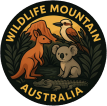NATIVE ANIMALS AS PETS
“Can’t I Keep It?” — The Dilemma of Wild Hearts and Human Hands
Imagine walking through the soft hush of the Australian bush. The pale morning sun filters through the canopy, dappling the leaf-strewn floor. In the stillness, you find a native animal—a joey, perhaps, or a small bird—alone and vulnerable. Your first instinct is powerful and pure: to scoop it into your arms, to protect, to care. The phrase echoes in your mind, quietly hopeful, “Can’t I keep it?”
It’s a moment filled with wonder and responsibility. For children and adults alike, such an encounter awakens a sense of empathy and connection to the living world—a yearning to bring wild beauty into our daily lives.
The Truth of Wildness
Yet, while your intentions are loving, the reality facing native animals brought into homes is often one of silent suffering. Australian wildlife—from the spiky, solitary Echidna to the shimmering Rainbow Lorikeet—carry the deep imprint of their unique habitats. Their diets are intricate, their behaviours finely attuned to the patterns of wind, rain, and sunlight across the land. Ordinary household foods can be dangerous or even lethal. Imagine a Sugar glider offered a pet’s milk, its tiny body unable to process it—what promises comfort brings only harm.
Now consider the youngest of our wild species—joeys tucked deep in their mothers’ pouches, learning to live from the warmth and rhythm of her heartbeat. Without special formulas, without the expertise of a trained carer, these youngsters risk dehydration, malnutrition, and weakness. Stories abound of well-meaning people watching helplessly as an animal fades, despite their best intentions.
The Ethics and Legality
Ask yourself: What is truly in this animal’s best interest? It’s not just a matter of kindness—it’s the law. Across Australia, keeping native animals as pets is strictly regulated, to protect both individuals and the species as a whole. Licensed wildlife carers spend years learning how to rehabilitate native animals for release, carefully balancing every detail to allow for a safe return to the wild.
To keep an animal at home, even with love and care, is to risk stunting its natural instincts. Birds may never learn to forage; kangaroos may grow to fear neither dogs nor humans—a potentially tragic fate. Unintentional harm can be seen in weak bones, deformed beaks, sparse fur and ragged feathers—lives shaped by gentleness, but far from where they are meant to be.
The Joey’s Journey
Take, for example, the kangaroo joey. Soft, trusting, with oversized ears and a quiet heartbeat against your palm. The fantasy of raising it as a pet is powerful. Yet as it grows, so too do its wild instincts. A suburban backyard, even wide and green, becomes a cage to a creature built for boundless horizons and the company of its own kind. As adults, kangaroos and wallabies can grow stressed or aggressive, losing their place in wild society and gaining none in ours.
Diseases like toxoplasmosis, spread by household cats, and stress-related conditions can swiftly turn a home into a place of danger. Even daily activities—fertilising your garden, mowing the lawn, using household sprays—can introduce risks invisible to us but all too real to sensitive native species. Over time, these animals may come to see humans as their closest allies, but this only makes them more vulnerable should they ever be released.
The heartbreak is greatest when it becomes clear that returning them to the wild is impossible; their survival skills have not been honed by nature, but blunted by human hands.
Why Can’t I Keep a Joey or a Wallaby?
| Wild Joey Life | Domestic “Pet” Life |
|---|---|
| Learns survival skills | Adapts to artificial routine |
| Surrounded by own kind | Isolation, stress, confusion |
| Diet is perfectly tailored | Risks of inappropriate food |
| Freedom to roam | Limited space, behavioural issues |
| Protected by evolution | Open to diseases, miscare |
What to Do If You Find a Native Animal in Need
The truest act of care is to contact experienced wildlife rescue organisations or your state’s National Parks office as soon as possible. These teams have the knowledge, resources, and legal authority to ensure that every animal’s best chance is honoured: to grow, recover, and, if possible, return to the wild.
A Gentle Message of Conservation
Every wild animal belongs, first and foremost, to the world they were born into—the cycle of rain on leaves, the taste of native grass, the chorus of birds before dawn. The thrill of seeing these creatures up close is a gift, a brief intertwining of two worlds. But the most profound kindness is to honour their wildness, supporting them from a respectful distance and preserving the habitats they need.
The next time you encounter an animal in need, remember: by seeking help from wildlife experts, you offer the animal the greatest gift—a life shaped by the rhythms of the bush, not by the walls of a house.
Key Takeaways
- Native animals are not pets: Their needs are complex, and keeping them can cause unintentional harm.
- It’s against the law: Only licensed carers can legally care for orphaned or injured wildlife.
- Wildlife belongs in the wild: The best thing for rescued animals is a return to their natural homes, equipped with the skills they need to survive.
- Your help matters: Contact your local wildlife rescue if you find a wild animal in distress.
